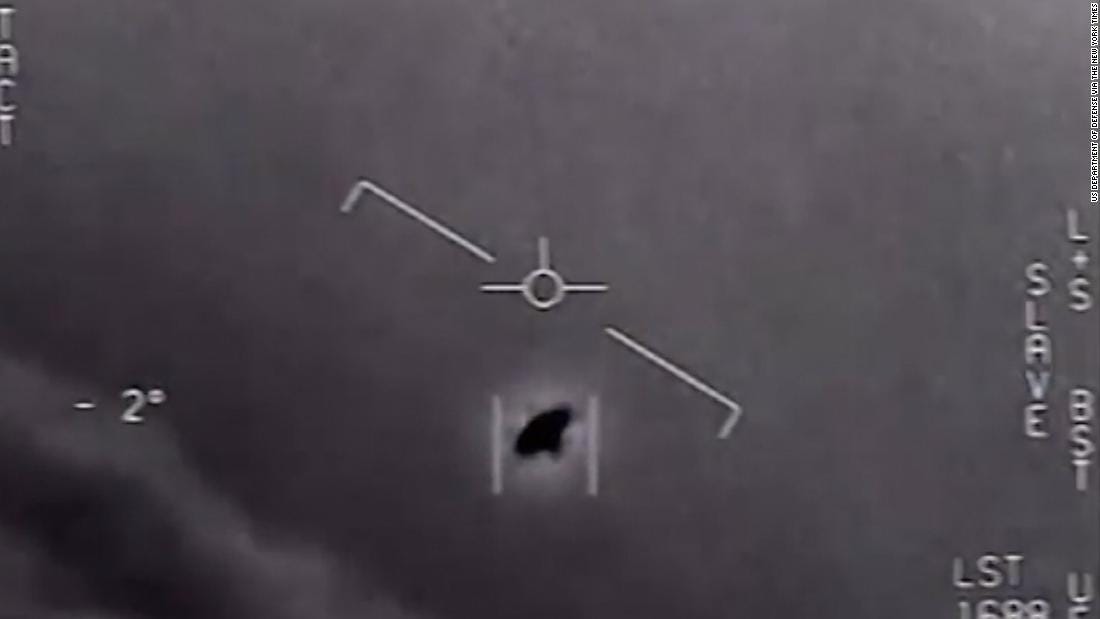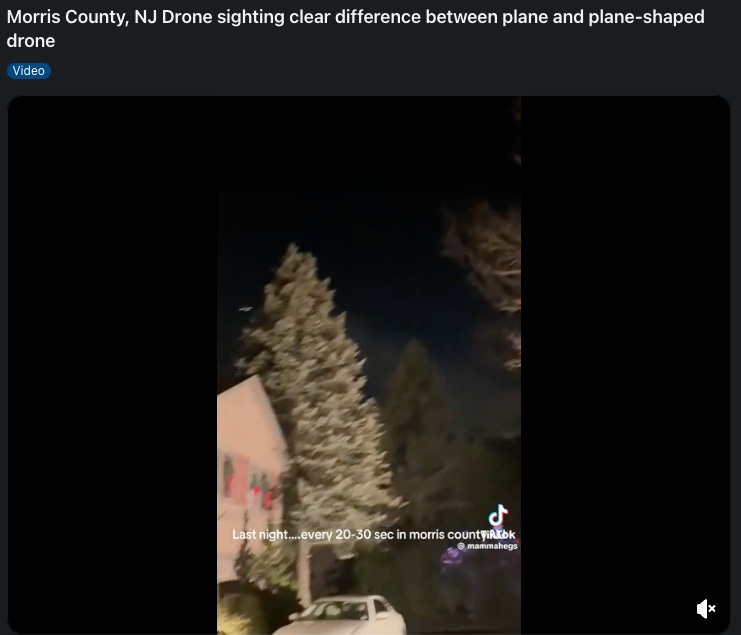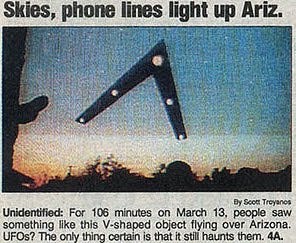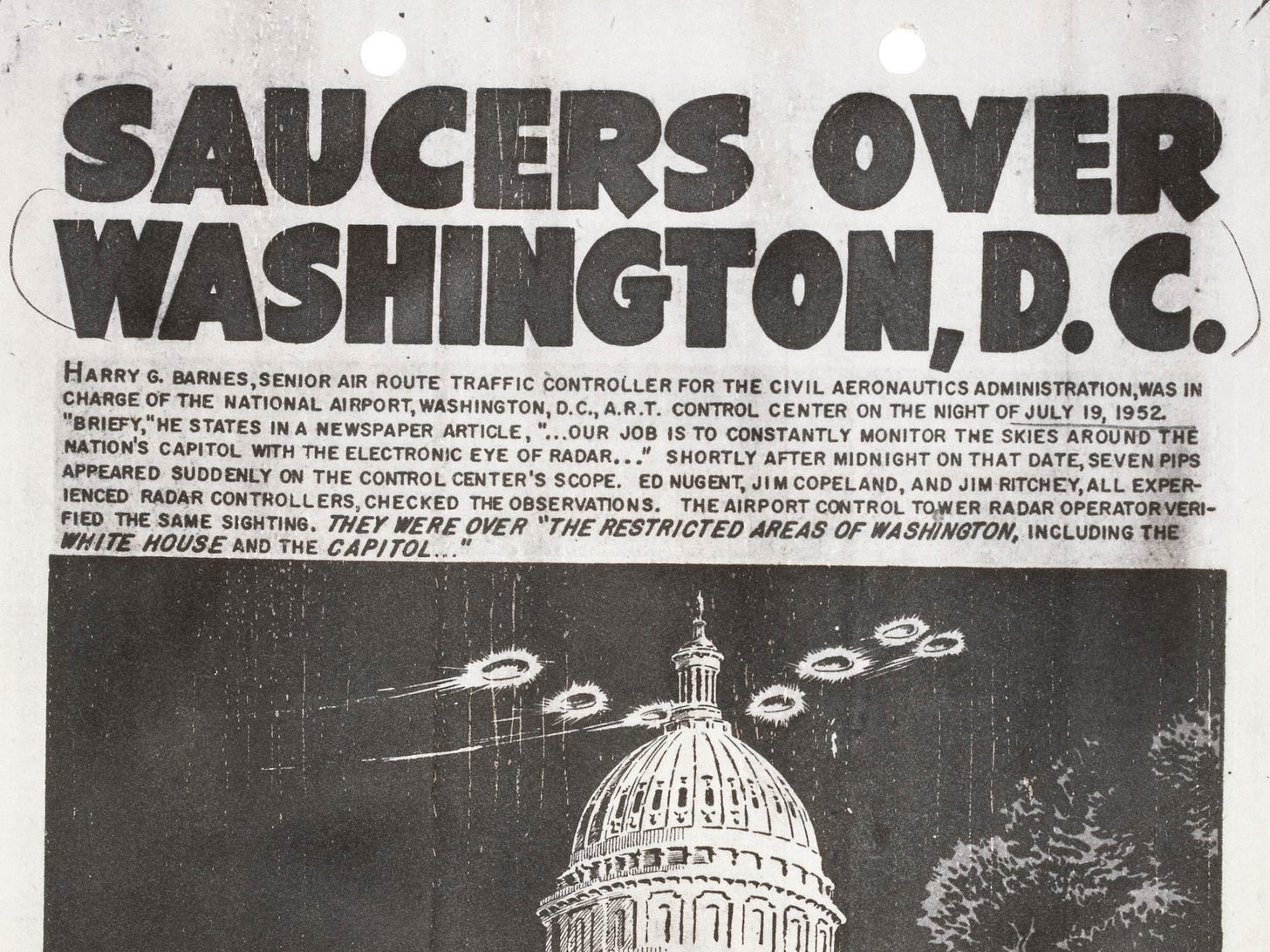From Mystery to Mass Hysteria: The Impact of Unexplained Drone Incursions
How Mass Hysteria and Misidentifications Are Muddying the UAP Waters
In recent months, a wave of unauthorised drone incursions over military installations in both the United Kingdom and the United States has ignited widespread concern.
These events have raised critical questions about national security, technological vulnerabilities, and the unknown, prompting government investigations and a flood of public speculation. At the center of this phenomenon lies a collision between fact, fear, and fiction, creating an atmosphere of mass hysteria.
Despite ongoing inquiries, federal agencies and military personnel have been unable to determine the origin or purpose of these drones. The lack of clarity has left a void filled by misidentifications, conspiracy theories, and misinformation.
This article explores the timeline of events, the responses from governments and the public, the consequences of mass hysteria, and how these developments are affecting the credibility of UAP (Unidentified Aerial Phenomena) discourse.

Timeline of Events
Initial Sightings in the UK
November 20-22, 2024
Unidentified drones were reported over three major U.S. Air Force bases in the UK: RAF Lakenheath, RAF Mildenhall, and RAF Feltwell. These bases are of strategic importance, hosting critical operations for both the U.S. and UK armed forces.
Witnesses described drones of varying sizes performing erratic flight patterns, with some reports indicating they hovered for extended periods over restricted airspace. Speculation about the drones’ capabilities ranged from advanced surveillance technologies to potential military threats. Despite thorough investigations involving ground-based tracking systems and aerial patrols, officials failed to locate the operators.
November 27, 2024
Additional sightings over RAF Fairford, a key facility for nuclear-capable B-2 bombers, prompted the UK Ministry of Defence to deploy specialised counter-drone units. These teams, equipped with state-of-the-art RF detection tools and anti-drone weaponry, launched a full-scale operation to neutralize any unauthorised devices. The incident escalated concerns among military officials, who described the repeated incursions as “potential reconnaissance missions by unknown adversaries.”
Incursions in the United States
Early December 2024
Residents in New Jersey began reporting nighttime drone sightings over suburban neighbourhoods. Accounts ranged from solitary drones to swarms of 30-50 flying in formation. A local witness described them as “eerily quiet, almost as if they were designed to evade detection.” The reports led to heightened public anxiety, with some speculating about advanced foreign adversaries conducting covert operations on U.S. soil. Videos of the sightings quickly went viral, fuelling conspiracy theories.
December 5, 2024
State Senator Jon Bramnick called for a limited state of emergency, urging the temporary suspension of all non-essential drone activity in affected areas. The Federal Aviation Administration (FAA) and the Department of Homeland Security (DHS) deployed teams to investigate the incidents. Despite sophisticated monitoring technologies, including geofencing systems and infrared detection, no immediate explanations emerged.
December 8, 2024
Similar sightings near naval installations in California deepened the mystery. According to a Pentagon official, “The patterns suggest deliberate surveillance, but the motivations and operators remain unidentified. The lack of communication from those responsible raises serious questions.”
Government Response
Governments on both sides of the Atlantic have mobilised significant resources to address these incursions. In the UK, counter-drone specialists were equipped with RF detection systems, geofencing tools, and anti-drone nets to intercept and track rogue devices. Surveillance radars and infrared imaging complemented ground operations, while military intelligence units analyzed potential threat actors. Despite these efforts, no clear leads were uncovered, leading to frustration within both government circles and the public.
In the United States, federal agencies employed advanced drone-jamming equipment and machine-learning algorithms to detect unusual flight behaviors. Military installations implemented tighter airspace restrictions, and coordination between the FAA, DHS, and NORAD intensified. However, public communication remained vague, with officials citing national security as a reason for withholding detailed updates. Critics argue that this lack of transparency contributes to public mistrust and fuels conspiracy theories.
Dr. Melissa Harding, a defense analyst, commented, “While operational security is crucial, the absence of credible updates creates a vacuum where misinformation thrives. More proactive engagement with the public could alleviate fears and reinforce confidence in government oversight.”
A Recipe for Hysteria
The public reaction has been polarised. While some individuals view these incidents as a fascinating mystery worthy of exploration, others have descended into unfounded speculation. Social media platforms like Reddit and X (formerly Twitter) have become battlegrounds for ideas, with hashtags like #DronesOverNJ and #UAPAlert trending across platforms.

Reddit forums such as r/UFOs have been flooded with videos claiming to show UAPs. One post titled "Unbelievable triangular craft over New Jersey!" featured what was later identified as a police helicopter.
The user insisted it was "definitely not human-made," despite clear navigation lights and rotor noise audible in the video. Similarly, a viral thread on X shared a video of blinking lights over California, which aviation experts quickly attributed to a commercial airliner. The poster dismissed the explanation, stating, "Wake up, people! This is not a plane."
These examples highlight how misinformation spreads rapidly when posts rely on emotional appeal rather than verifiable evidence. The speed of sharing outpaces debunking efforts, ensuring that false narratives reach a wide audience before facts can catch up. Some users even accuse debunkers of being part of a "disinformation campaign," reinforcing the cycle of mistrust.
For example, a December 2024 post on X included footage of a satellite passing through the night sky, accompanied by the caption, "Unidentified and moving in a straight line—proof of alien tech?" This video, which astronomers confirmed depicted a known satellite, garnered over 500,000 views before being flagged for misinformation. Despite this, the post continues to circulate with new captions reinterpreting the footage.
The public reaction has been polarised. While some individuals view these incidents as a fascinating mystery worthy of exploration, others have descended into unfounded speculation. Social media has become a battleground of ideas, with hashtags like #DronesOverNJ and #UAPAlert trending across platforms.
For example, a widely circulated video from December 3, 2024, showed bright lights in a triangular formation over a New Jersey neighbourhood. The uploader claimed the lights hovered for 15 minutes before disappearing. Although aviation experts quickly identified the lights as a commercial airliner on approach to Newark Liberty International Airport, the explanation did little to quell online debates. Claims of “cover-ups” and “government secrecy” continued to dominate discussions.
Mass Hysteria and the Role of Misidentifications
The wave of hysteria surrounding these incidents mirrors earlier periods of UFO panic, such as the 1950s “flying saucer” craze. Misidentifications, fuelled by confirmation bias and sensationalist reporting, have muddied the waters of legitimate investigation.
Dr. Sarah Kendall, a leading UAP researcher, noted, “When people misidentify mundane objects like planes or helicopters as extraordinary phenomena, it undermines the credibility of genuine cases. Social media exacerbates this problem by amplifying unverified claims.”
Recent analyses of popular “evidence” videos revealed numerous examples of commercial drones, police helicopters, and weather balloons mischaracterised as UAPs. Despite clear debunking, these clips continue to circulate, reinforcing misconceptions and eroding public understanding of aerial phenomena.
The Broader Implications for UAP Discourse
The UAP phenomenon has gained increasing attention in recent years, with the release of Pentagon reports and firsthand accounts from reputable pilots. However, the current wave of misidentifications threatens to overshadow this progress. By conflating explainable incidents with genuine anomalies, believers risk alienating potential allies within the scientific and defense communities.
James Carver, a former FAA investigator, emphasised, “Serious researchers are now forced to spend valuable time debunking obvious misidentifications. This diverts attention from truly unexplained cases that could hold valuable insights.”
Case Study: The 2024 New Jersey Incident
One of the most striking examples of misidentification occurred in early December 2024. A viral video depicted a formation of lights over a residential area in New Jersey. Within hours, it garnered tens of thousands of shares, with captions like “Proof of covert government drones?” and “Something extraterrestrial in our skies.”
Aviation expert Michael Langford analysed the footage and identified the lights as a fleet of helicopters conducting routine training exercises. Despite his detailed explanation—including corroborating flight data and official statements—the video’s popularity persisted. Many users dismissed the expert analysis as part of a “disinformation campaign.”
Historical Context and Past Panics
The current wave of hysteria surrounding unidentified aerial phenomena is not unprecedented. History offers several examples of similar events where public anxiety and misinterpretations shaped the narrative.
One of the most well-known cases is the 1997 Phoenix Lights incident. Thousands of witnesses reported seeing a massive, V-shaped formation of lights moving silently across the sky. While many attributed the phenomenon to extraterrestrial origins, subsequent investigations suggested it was likely a combination of military flares and conventional aircraft. Nevertheless, the event remains a focal point for UAP enthusiasts and underscores how mass sightings can spiral into legend.
Another notable example occurred in 1952, when a series of radar and visual sightings over Washington, D.C., led to widespread panic. The sightings, attributed to temperature inversions affecting radar readings, prompted a rare press conference by the U.S. Air Force to address public fears. The "flying saucer" craze of the mid-20th century further exemplifies how societal factors, including media sensationalism and Cold War anxieties, contributed to UFO hysteria.
These historical cases reveal a recurring pattern: unexplained events spark public fascination, which is amplified by misinformation and a lack of clear communication from authorities. Understanding these patterns provides valuable context for interpreting the current phenomenon.
Credible UAP Cases: The Tic Tac Incident and Others
While many UAP sightings can be explained through conventional means, some cases defy easy categorisation. One of the most compelling examples is the 2004 "Tic Tac" incident, which involved U.S. Navy pilots and radar operators aboard the USS Princeton. Witnesses described a white, oblong object resembling a Tic Tac candy that exhibited extraordinary flight characteristics, including rapid acceleration and the ability to hover mid-air before disappearing. The object was tracked on advanced radar systems, and pilots reported that it appeared to "actively jam" their sensors.
The incident gained widespread attention after the Pentagon declassified videos of the encounter in 2017. Despite extensive investigations, no definitive explanation has been provided, and the case remains one of the strongest pieces of evidence for the existence of advanced, unexplained aerial technology.
Another credible case occurred in 2015 when Navy pilots reported encountering objects that could reach hypersonic speeds without visible propulsion systems. These sightings were part of a larger pattern of encounters documented by the Navy between 2014 and 2015, leading to the establishment of the Pentagon’s UAP Task Force.
These well-documented cases stand in stark contrast to the many misidentifications that dominate social media, underscoring the need to distinguish between genuine anomalies and easily explainable phenomena.
Practical Tips for UAP Enthusiasts and avoiding Misidentifications
To maintain the integrity of UAP research, enthusiasts should adopt the following practices:
Educate Yourself
Gain a foundational understanding of aviation, including how planes, helicopters, and drones operate. Learn to recognise common aircraft lighting patterns, flight trajectories, and behaviours. Many misidentifications stem from a lack of familiarity with basic aviation principles, which can be easily addressed with online resources or mobile apps like flight trackers.
Verify Before Sharing
Before posting or amplifying claims, use tools like ADS-B flight trackers or satellite maps to identify known air traffic in the area. These tools can often pinpoint the exact aircraft responsible for a sighting. Additionally, cross-reference with local news or aviation forums to rule out ongoing events like military exercises or airshows.
Scrutinise Evidence
Approach all claims with a critical mindset. Ask key questions: Is the video or photo high-quality and verifiable? Does the source have credibility? Are there alternative explanations that align with known technologies or natural phenomena? Avoid emotionally charged interpretations that rely on sensationalism rather than evidence.
Promote Rational Discussion
Engage in constructive dialogue within the UAP community to filter out disinformation and poorly substantiated claims. Encourage others to approach sightings with a healthy balance of skepticism and curiosity. Create spaces for reasoned analysis rather than sensational debates.
Focus on Quality Over Quantity
Prioritise cases with multiple credible witnesses, supporting data (such as radar or thermal imaging), and thorough documentation. Isolated, blurry images or anecdotal reports should not overshadow well-documented incidents that offer opportunities for rigorous investigation.
Avoid Falling for Clickbait
Social media platforms often amplify sensational or misleading posts for engagement. Stay vigilant against posts that make extraordinary claims without providing extraordinary evidence. Be cautious of videos with vague captions like "This just hovered for hours—what is the government hiding?"
Learn from Experts
Follow credible organisations or individuals in the field of aerospace, astronomy, and UAP research. Experts often debunk misidentifications with evidence-based explanations, providing insights that help the community focus on legitimate anomalies.
Be Open to Debunking
Recognize that being wrong about a sighting does not diminish the importance of UAP research. In fact, debunking mundane sightings strengthens the case for genuine anomalies by removing noise from the signal.
By adopting these practices, UAP enthusiasts can contribute to a more informed, credible, and constructive discourse around the phenomenon, ensuring that genuine cases receive the attention and investigation they deserve.
Balancing Curiosity with Critical Thinking
The recent drone incursions are a legitimate concern that warrants serious investigation, but the accompanying hysteria risks overshadowing the issue’s importance. Misidentifications and unfounded speculation undermine efforts to understand these phenomena and distract from meaningful progress.
To navigate this complex issue, governments must enhance transparency, and the public must approach claims with both curiosity and skepticism. Only through collaboration and rational discourse can we hope to uncover the truth behind these mysterious events. Until then, the skies remain a battleground of both fact and fiction.
My personal belief is that there is other life in the universe. While I am uncertain if they have visited Earth, I do not outright dismiss the possibility, albeit I lean towards the side that they are here. I want to believe, but we need more compelling evidence. So far, nothing I’ve seen has been truly conclusive.
Even with leaks from the Pentagon and whistleblower claims, given the government’s history of obfuscation and misdirection, it would be naive to dismiss the possibility that this could be a psyop, a grift, or mass hysteria. That said, there is evidence suggesting that some of the most compelling cases lack prosaic explanations. However, there is still not enough for anyone in the public to definitively state what we’re seeing in our skies.
I hope you’ve enjoyed this dive into this topic, it’s one of my favourite topics and something that I have a keen interest on that isn’t as mundane as most of my other interests.
What do you think? Have you seen anything unexplained? Share your story in the comments, and let me know what you think about the recent events.






